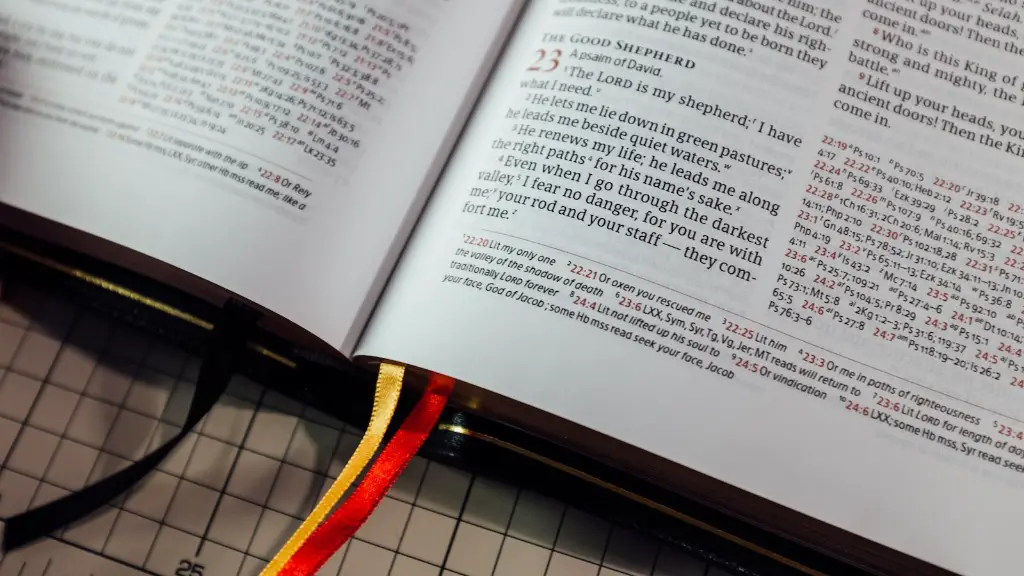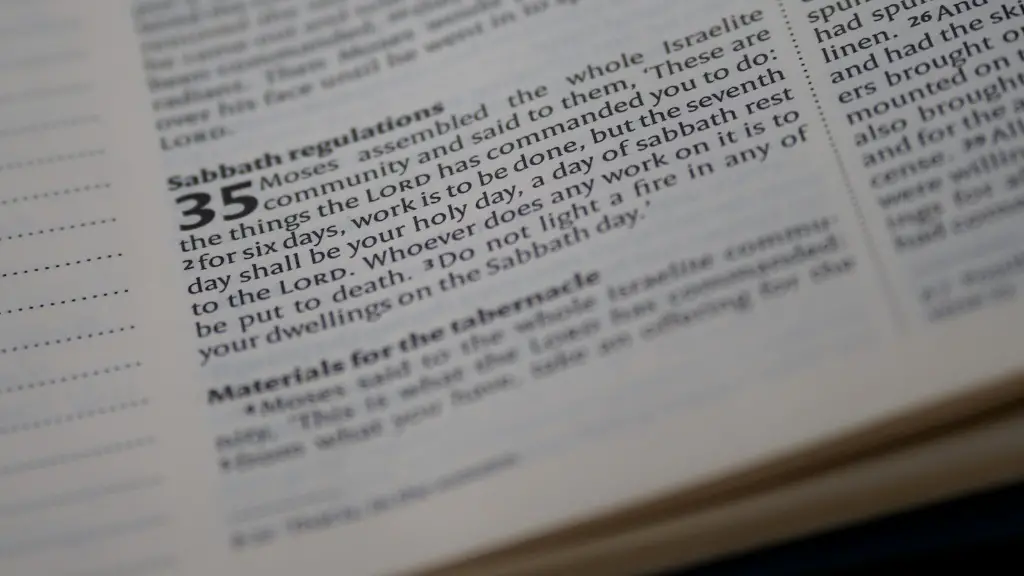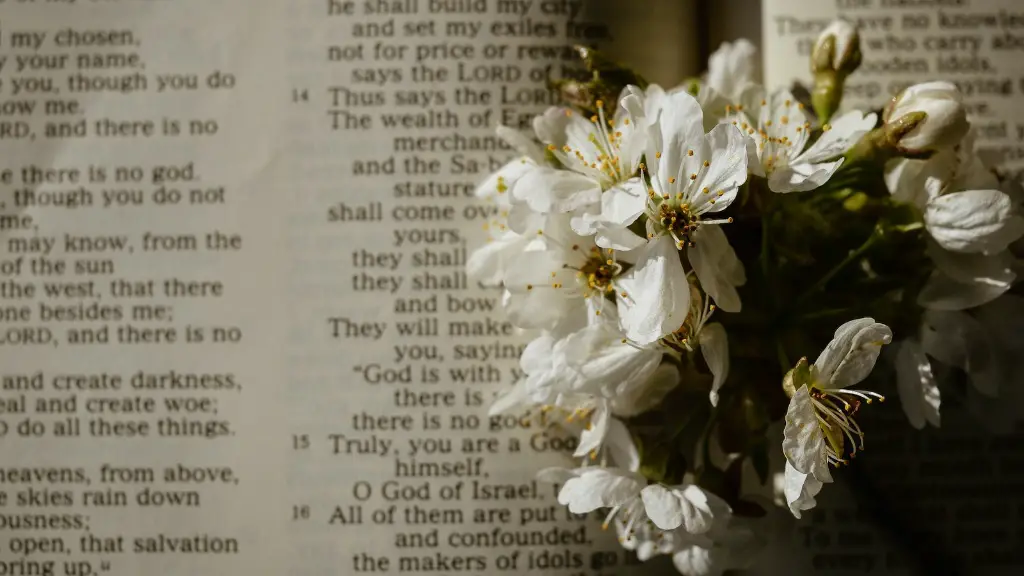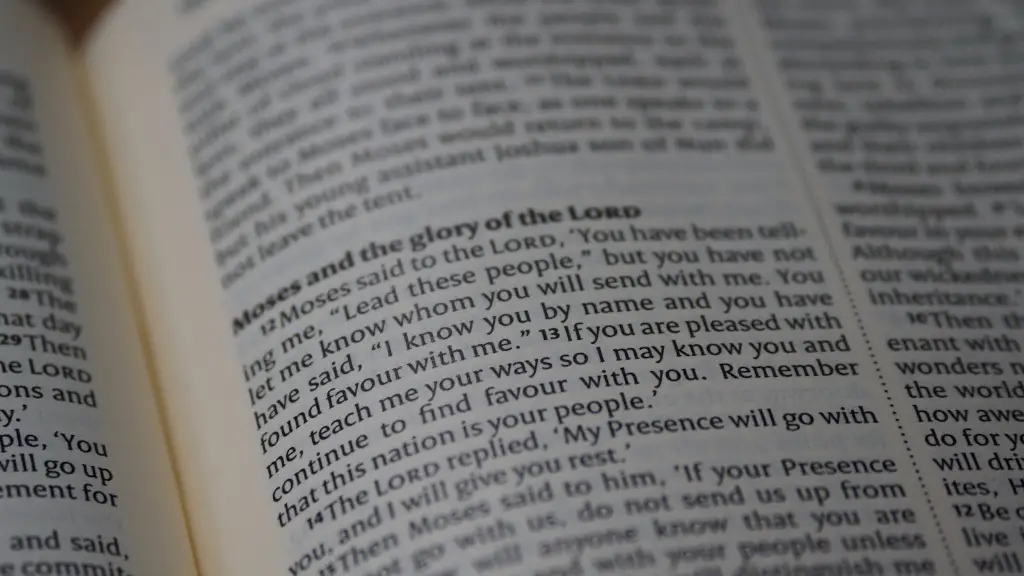The Bible is a religious text that Christians believe is the word of God. It is divided into two parts: the Old Testament, which contains the books of the Hebrew Bible; and the New Testament, which contains the Gospels and other writings of the early Christian movement.
The Bible is a compilation of religious texts written by different authors over the course of centuries. Its Old Testament is based on the Hebrew Bible, which was traditionally ascribed to Moses and other ancient prophets. The New Testament chronicles the life and teachings of Jesus Christ, who Christians believe is the Son of God.
Where did the Bible actually come from?
It is now believed by scholars that the stories that would become the Bible were disseminated across the centuries by word of mouth, in the form of oral tales and poetry. This was likely done as a means of forging a collective identity among the tribes of Israel. Eventually, these stories were collated and written down.
The Bible is one of the most popular and influential books in the world. It is also one of the most controversial, with people of different faiths and beliefs interpreting it in different ways.
The Bible is actually a library of different books, written at different times by different people. The Old Testament is the original Hebrew Bible, the sacred scriptures of the Jewish faith, written at different times between about 1200 and 165 BC. The New Testament books were written by Christians in the first century AD.
There are many different English translations of the Bible, but the most popular is the King James Version, first published in 1611.
Who originally created the Bible
The author of the Hebrew Bible is traditionally believed to be Moses, the Hebrew prophet who led the Israelites out of captivity in Egypt and guided them across the Red Sea toward the Promised Land. This belief is based on a number of factors, including the fact that the majority of the Bible is written in the first person singular, as if Moses is telling his own story. Additionally, many of the events described in the Bible are said to have happened during Moses’ lifetime, such as the Exodus from Egypt and the giving of the Ten Commandments.
The Torah, or Jewish Law, consists of the first five books of the Hebrew Bible: Genesis, Exodus, Leviticus, Numbers, and Deuteronomy. These books are also known as the Pentateuch.
Traditionally, Jews have believed that the Torah was dictated by God to Moses. However, starting in the 17th century, scholars have increasingly argued that the original sources for the Torah were written by multiple anonymous authors, and that Moses may have simply compiled these sources into the Torah as we know it today.
This theory of multiple authorship is known as the documentary hypothesis. It is the most widely accepted theory among scholars today. However, there is still debate about which sources were used, and how exactly they were compiled into the Torah.
Did God or Jesus write the Bible?
The Bible is a unique book in that it is both human and divine. The stories, poems, histories, letters, and prophecies contained within come from a collaboration between God and humanity. This makes the Bible a powerful and authoritative book that can speak to us on a deep level.
The Bible is an ancient book, and throughout history, there have been many copies made of the manuscripts. Despite common skeptical claims that the Bible has often been changed through the centuries, the physical evidence tells another story. The New Testament records are incredibly accurate.
Where was the Bible found?
The discovery of the Hebrew Bible at Qumran is one of the most important archaeological finds in the history of the Bible. For the first time, we have direct evidence of the existence and content of the Hebrew Bible outside of the Bible itself. Furthermore, the fact that many copies of the same book were found at Qumran suggests that the Hebrew Bible was widely circulated and read during the time period in which it was written.
The Adamic language has been a matter of debate among scholars for centuries. Some believe that it was a real language spoken by Adam and Eve in the Garden of Eden, while others believe that it was simply a metaphor for the perfect language that was spoken before the fall of man. Regardless of its true nature, the Adamic language is an important part of both Christian and Jewish tradition.
Who destroyed the original Bible
The Roman Emperor Diocletian was a fierce persecutor of Christians and he did everything in his power to wipe out Christianity. In AD 301-304, he ordered the burning of thousands of copies of the Bible and decreed that all Bibles should be destroyed. Any home with a Bible in it was to be burned to the ground. Diocletian even built a monument over what he thought was the last surviving Bible. However, his efforts to destroy Christianity were ultimately in vain as the faith continued to spread and thrive.
The four gospels of the New Testament were written over the course of almost a century after Jesus’ death. Though they tell the same story, they reflect very different ideas and concerns. A period of forty years separates the death of Jesus from the writing of the first gospel.
What language did the Jesus speak?
Aramaic is a language spoken by Jesus and his followers in Galilee. It is a dialect of Aramaic, which was the lingua franca of the Middle East in the 7th century BC. Aramaic was widely spoken throughout the Middle East, and was the predominant language of the region until the 7th century AD.
While the exact origins of the family Bible in America are uncertain, it is generally agreed that the first complete Bible printed in America was in 1663 at the Cambridge, Massachusetts printing house of Samuel Green and Marmaduke Johnson. The family Bible became a popular fixture in American homes throughout the 18th and 19th centuries, and served as a source of religious instruction and moral guidance for many families. Today, the family Bible remains an important part of many American households.
What is a real name of Jesus
Jesus’ name in Hebrew was “Yeshua” which translates to English as Joshua. This is an interesting fact because it shows that Jesus had a different name in a different language. It is also interesting because the name Joshua is a very common name in the Bible.
The biblical basis for clarity in understanding Scripture is derived from two sources. First, the words of Scripture are self-attesting because they claim to be from God. Second, the Holy Spirit’s dynamic power applies the truth of Scripture, resulting in a confident assurance in the Word itself. Thus, as we read Scripture, we can be confident that we are understanding what God is saying to us.
Why can we trust the Bible?
Christians have leading the way when it comes to looking critically at the Bible and its texts. This is because they want to ensure that what is written in the Bible is reliable and accurate. By putting the Bible to critical study, Christians can be reassured of its reliability.
The author argues that the Gospel of John was in fact written in code, by Jesus himself. This is an interesting theory, and it would certainly explain a lot about the text. However, it is difficult to know how to verify this claim. If the author is correct, then it would be a major breakthrough in our understanding of the Bible.
Conclusion
The Bible is a collection of writings by different authors, written over a span of centuries. The earliest parts of the Bible were written in ancient Israel, with later parts being written in different parts of the world. The Bible was not written by one person, but rather by many different people.
The Bible is a collection of religious texts that were written by a variety of authors over the course of many centuries. While the exact origins of the Bible are unknown, it is clear that it has had a profound impact on the development of Western civilization.





